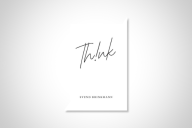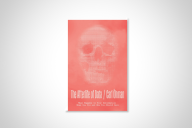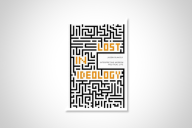You have /5 articles left.
Sign up for a free account or log in.
Another wave of fall catalogs from university and academic presses has come crashing down since the last publishing roundup. I’ve flagged more titles about which readers might want to know. The publication dates here have been checked against the presses’ websites and may vary from those listed by online retailers. Quoted passages are taken from the catalog listings.
I'd also like to take this opportunity to remind scholarly press people that the Inside Higher Ed global headquarters has relocated. Please send catalogs, books and such to the snail-mail address given here.
Sometimes a forthcoming title seems “ripped from the headlines,” as the old Law & Order tagline went. Of late, the 24-7 news cycle and the seasonal rhythms of publishing have been overlapping to create what might be called the hypertopical book: one so pertinent to breaking developments that you have to wonder how much will have changed by the time it’s actually in print.
A prime exhibit, if ever, is Glyn Ford’s Talking to North Korea: Ending the Nuclear Standoff (Pluto Press, distributed by University of Chicago Press), due out in September. A member of the British Labour Party’s International Committee who has visited North Korea numerous times, the author "challenges the image of North Korea as a failed state run by a mad leader and provides game-changing insights into the regime’s internal logic" by focusing on "sections of the leadership [that] are desperate to modernize and end North Korea’s isolation." But the country finds itself "trapped in an arms race against its enemies and is dependent on its military and nuclear program for economic development."
The Korean peninsula is curiously absent from the table of contents for The End of Strategic Stability? Nuclear Weapons and the Challenge of Regional Rivalries (Georgetown University Press, September), a collection of papers edited by Lawrence Rubin and Adam N. Stulberg. The concept of “strategic stability” derives from the old Cold War premise of two sides that "compete for global influence but would be deterred from using nuclear weapons." Given the proliferation of "nuclear powers, regional rivalries and nonstate actors who punch above their weight," it seems as if strategic stability would be a paradigm lost. In any case, the contributors try to assess it with case studies of China, India, Iran, Israel, Pakistan, Russia, Saudi Arabia and the United States. Considering the volume was in press during the period of “fire and fury” and “little rocket man” tweets, the editors may not have wanted to tempt fate.
A final example of the hypertopical offering, at least for now, is Michael F. Salamone’s Perceptions of a Polarized Court: How Division Among Justices Shapes the Supreme Court’s Public Image (Temple University Press, October). Analyzing "both the media’s treatment of Supreme Court decisions and public opinion toward the court’s rulings," the book presents "the first comprehensive, empirical analysis of how divisiveness affects the legitimacy of the court’s decisions," particularly with an eye to divided rulings. The author suggests that "contrary to expectation, court dissent may help secure public support by tapping into core democratic values." We’ll see if that continues.
A few titles on higher ed itself bear mentioning here. Strictly speaking, the list probably should not include Inventive Minds: Marvin Minsky on Education (The MIT Press, November), edited by Cynthia Solomon and Xiao Xiao. After all, it’s billed as offering "fresh perspectives" on "how children learn." But the six essays it reprints will be of wide interest given Minsky’s role in "both theoretical and practical advances in artificial intelligence, cognitive psychology, neural networks, and the theory of Turing Machines and recursive functions" (to quote a brief academic biography that should be updated to reflect his death two years ago). Accompanying each text is "commentary by one of Minsky’s former colleagues or students, which identifies Minsky’s key ideas and connects his writings to current research." The whole package sounds as stimulating as a large pot of coffee.
Elizabeth Cook-Lynn’s memoir In Defense of Loose Translations: An Indian Life in an Academic World (University of Nebraska Press, October) "frames her life’s work as the inevitable struggle between the indigene and colonist in a global history" by telling "the story of her unexpectedly privileged and almost comedic 'affirmative action' rise" from the "significant social isolation in American Indian reservation life" to her place as professor emerita of English and Native studies at "a regional western university." Besides her activism, scholarship and "tribal-life activities," the book recounts her experience of "teaching in an often hostile and, at times, corrupt milieu." Eyebrows will be raised.
Out in the Center: Public Controversies and Private Struggles (Utah State University Press, distributed by the University Press of Colorado, October), edited by Harry Denny et al., collects essays on "the personal struggles of tutors, faculty and administrators in writing center communities as they negotiate the interplay between public controversies and features of their own intersectional identities." The book’s list of co-editors is long enough to staff a writing center of their own.
Also institution oriented -- but pointing out the exits -- is Joseph Fruscione and Kelly J. Baker’s edited collection Succeeding Outside the Academy: Career Paths Beyond the Humanities, Social Sciences, and STEM (University Press of Kansas, September). Addressing "those leaving academia, or wanting out, or finding themselves adrift," the contributors draw on their own experience to give advice on "what making a move beyond the academy might entail -- emotionally, intellectually, and, not least, financially."
Let's finish this roundup with a book that shows considerable potential for entertainment value: David Alan Johnson’s Diploma Mill: The Rise and Fall of Dr. John Buchanan and the Eclectic Medical College of Pennsylvania (The Kent State University Press, August). The monograph "contains unusually dramatic elements more typical of a novel than a work of history." Besides the rogue title character (an "educator, author and criminal"), it features Gilded Age political corruption, "an elaborate sting operation" and Dr. Buchanan’s escape from the clutches of the law through faking his own death and fleeing the country.
Dr. Buchanan’s shady enterprise "ultimately resulted in stronger medical licensing laws," according to the catalog, which is true, though you might want to consult James Harvey Young’s classic The Medical Messiahs: A Social History of Health Quackery in Twentieth Century America (Princeton University Press, 1967) to see how long that took. In any case, Johnson's study will be of interest to anyone curious about the days when building a diploma mill took some real creativity and effort -- not like now, when it's usually just a website made up of stock photos, accepting "tuition" by credit card or PayPal.








